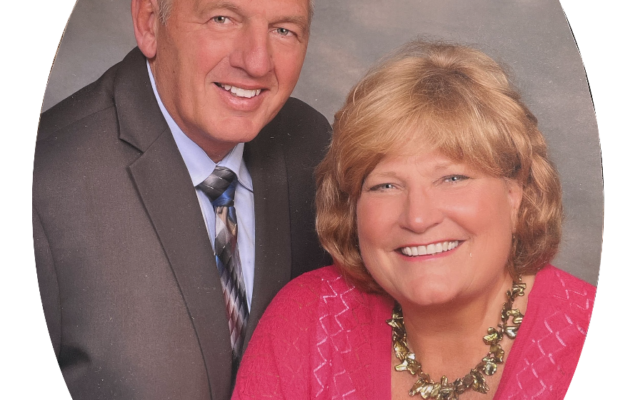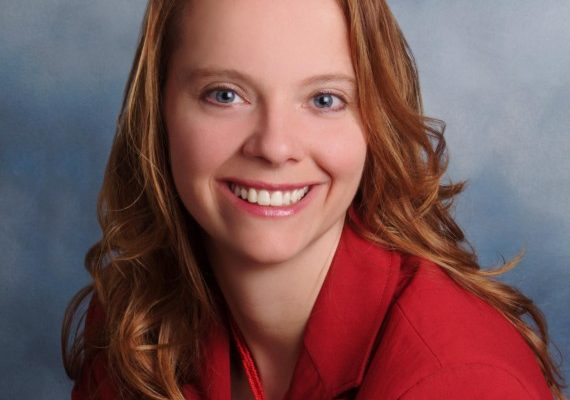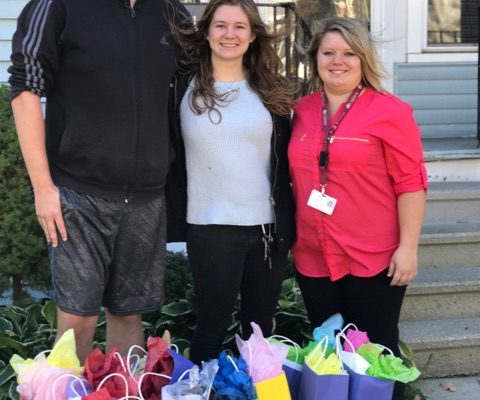
Oaklawn celebrates a century of care
Independent community hospital in Marshall commemorates 100th birthday
MARSHALL – Like so many others, Theresa Dawson’s story begins at Oaklawn Hospital.
The chief nursing officer for Oaklawn was born at the independent community hospital in Marshall. As was her mother, two siblings, two children and one grandchild.
“We have four generations in my family alone that have given birth at Oaklawn,” Dawson said. “My mom was born in the old house, where there was no elevator to get to the second floor where the birthing area was. My grandmother had to walk up the stairs while she was in labor. My mom had all three of us here before the last big renovation, when it still had the old oak tree out front.”
Dawson’s family is just one of countless generations who have turned to Oaklawn for quality health care since the hospital’s opening in 1925.
Oaklawn is kicking off its centennial celebration with an unveiling of its history timeline display on Jan. 16, inside the lobby of the hospital at 200 North Madison. The display will be available for the public to see all year long, featuring archived medical equipment and photos highlighting the evolution of the hospital from a 12-bed private residential home to a sprawling state-of-the-art hospital that serves Calhoun and parts of Branch and Eaton counties with about 1,000 regional employees.
Additional celebrations of the 100-year milestone are being planned, including a big anniversary celebration for the entire community on July 25, 2025 in the new Marshall Activation Zone. More information can be found on Oaklawn’s event calendar at oaklawnhospital.org/events.
“It’s been truly a pleasure and an honor to serve the Greater Marshall community and Calhoun County,” said Gregg Beeg, president and CEO for Oaklawn. “It’s been an organization where the community has really supported the hospital, and vice versa, the hospital has supported the community. We’ve been very fortunate to serve the community for 100 years.”
COMMUNITY BIRTHS OAKLAWN, WILLS IT TO SURVIVE & THRIVE
Oaklawn’s journey as a health care organization began in 1912 as the Ella E.M. Brown Charitable Circle, which is still the legal name of Oaklawn Hospital today. Citizens met to consider a bequest and conditions stipulated in the will of Charles Pratt Brown, who left his entire estate to Marshall for the establishment of a hospital.
On July 25, 1925, that hospital opened its doors at the former C.L. Dibble “Old Mansion” residence, the county’s first brick house that was built by Marshall co-founder Sydney Ketchum in 1837 on the property where the present building is situated. The E.M. Brown Charitable Circle board of directors would be comprised of only women until 1953, the same year the hospital embarked on its first major expansion with the dedication of a 47-bed building.
Over the ensuing decades, Oaklawn faced steep fiscal challenges that at times put it on the brink of closure. In 1972, a committee led by Marshall attorney Ronald DeGraw helped raise $1.5 million to add 10,000 square feet and 77 beds.
In 1976, Rob Covert became Oaklawn’s CEO, a position he held until 2013. Covert said the Southwest Michigan Health Systems created a minimum birthing policy that threatened to close Oaklawn’s obstetrics (OB) department. The community again stepped up and mounted an offensive to save it. Another crisis was averted four years later when the same health system agency found there to be too many hospital beds in Calhoun County and recommended the closure of Oaklawn, only to receive significant pushback from the community.
“It was a mantra of either grow or die,” Covert said. “More doctors, more services, more locations and our facilities had to be better. We couldn’t be a band aid station anymore. It was fairly called a band aid station, because we didn’t have the doctors or employees that a hospital needed, so we started to grow.”
That ‘grow or die’ mantra and a commitment to remain in downtown Marshall resulted in the investments of a $5 million addition in 1991, a $14.4 million addition in 2002, a $27 million addition in 2007 and finally a $25 million addition in 2012 that created six new operating rooms, dubbed “The Rob Covert Surgical Center of Excellence.”
“It was quite a surprise and I was deeply honored,” Covert said of the dedication. “The culture at Oaklawn changed over that 40-year period. The hospital culture became one of insisting on excellence, being selective about the equipment, selective about the employees and expecting excellence and committing resources to achieve excellence.”
Oaklawn faced a different kind of challenge following the outbreak and subsequent waves of the COVID-19 virus, which shook up the entire U.S. health care industry. When little was known about the virus, staff took precautions and treated patients despite risks to their own health. The hospital adapted to the pandemic several ways, including temporary restrictions with its visitor policy; increased virtual or telehealth visits; access to testing; and delivery of vaccines and treatment.
“During COVID, we were quick to get telemedicine on board; able to get our vaccine program up and running very effectively; and with the monoclonal antibodies used for treatment, we had a really vigorous program,” said Oaklawn Chief Medical Officer Dr. Summer Liston-Crandall. “We really saw our teams come together and work remarkably well together in ways we never have before, at least not at that intensity. It was really rewarding to be a part of that and see how we performed despite our small but mighty size.”
Dawson, now in her 45th year as a nurse, the last 10 as Oaklawn’s chief nursing officer, added that the community has been largely responsible for the hospital’s longevity.
“The reason that Oaklawn has been able to maintain its identity and commitment to the community is because of the people that we serve,” Dawson said. “If this community did not appreciate the things that we do, it would be hard to continue the fight.
“I think it’s been the commitment of those who came before us, and of the community that has allowed us to make it to 100 years. The same goes for the future. If we’re going to maintain our independence, it’s going to take a lot of work from people not only within these walls, but people outside the walls.”
CONTINUING TO EVOLVE, INNOVATE AND EXPAND

Oaklawn has made significant investments in state-of-the-art technology to improve the health outcomes of its patients, including three da Vinci Surgical Robot systems as well as a Mako surgical robotic arm for joint surgeries. It has also improved access to quality health care beyond Marshall by expanding its footprint into Battle Creek, Albion and Coldwater.
For decades, Oaklawn has been Marshall’s largest employer, and will soon be surpassed with the opening of Ford’s Blue Oval battery plant. It’s large employee base has made significant contributions to Marshall’s economy and culture. A 2017 study by the Michigan Health & Hospital Association estimated the economic impact of Oaklawn’s health care services in the community to be about $250 million annually.
What cannot be measured is the hospital’s impact on the overall quality of life for the region, as well as the total number of individuals and families whose lives were impacted by the treatment and care they received at Oaklawn.
While much has changed with modern medicine and technology since the hospital’s humble beginnings in 1925, Oaklawn has remained true in its commitment to providing quality health care to the community.
“I think 100 years is a remarkable achievement for a hospital, especially for one to remain independent and function in this community hospital role,” Liston-Crandall said. “It allows us to look back generations to our beginnings, and to look forward to where we’re going… By being embedded here, we really have the ability to care for our people best.”
Beeg added that he is grateful for the work by previous generations to establish Oaklawn’s culture, setting it on a course for where it is today. He’s also thankful for the community’s trust and investment in the hospital.
“It’s been a true honor to be able to serve the community for the last 100 years, and we look forward to the next 100 years,” Beeg said. “We’re going to do everything in our power to celebrate the 200th anniversary down the road. We have to look to the future and continue to lay the foundation.”
ADDITIONAL LINKS
Oaklawn Timeline: https://oaklawnhospital.org/about-us/history/

